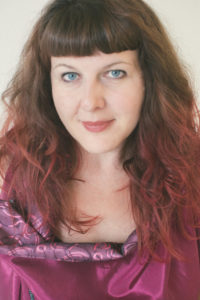The visual essay is a hybrid narrative form that communicates meaning for the reader both visually and textually.
Some visual essayists incorporate illustrations, photos, or textile art in their written work; others rely on technology to help convey their message via hypertext or the video essay. The possibilities for combining words and pictures in storytelling are both exciting and too numerous to list.
When students of my visual essay course set out to draft new work, my one piece of advice? Ensure both the text and image are contributing something unique to the story—adding depth, creating texture, or somehow moving the piece forward.
***
In 2000, Anders Monson founded The Diagram, an online literary journal that embraces genre-fluid written forms and the art of illustration.
If you’re curious how text and image can artfully overlap to tell stories, The Diagram is a must read. Here you’ll discover fascinating found schematics alongside hermit crab essays, collage sequences, electronic essays, erasure poems, and transition flow diagrams.
Monson recommends that writers who want to “mess around” with visuals read cartoonist Scott McCloud’s Understanding Comics—in particular, Chapter 6, “Show and Tell.” I did, and wish I’d read it sooner.
McCloud’s breakdown of the many different ways pictures and words interact in comics are highly relevant for writers working in other storytelling forms, including CNF.
***
As McCloud outlines in Understanding Comics, the simplest ways to use text and image in storytelling are word- or image-specific combinations, or “duo-specific panels.”
Word-specific combinations occur when action is primarily communicated through text, and an accompanying image illustrates the same message. (Likewise, picture-specific combinations are communicated with an image, and any included text reinforces the meaning.)
Duo-specific panels provide a balance of image and text with each mode conveying the same meaning.
When it comes to CNF’s visual storytelling forms, writers can use text and images in precisely the same way—echoing the text’s message by adding a related photo, for instance.
But images can do so much more for a piece. Their potential to create a greater impact seems wasted by just reinforcing the meaning of the words.
Visual storytelling becomes much more powerful when the image and text serve the story in a way the other mode can’t.
***
I consider the following four image-text combinations “high impact” ways to tell stories:
- In an additive combination, the visual and textual messages intersect; the text amplifies the meaning of the image (or the image, the meaning of the text). For an example, take a look at Robert Castagna’s “Table of Aesthetic Values.”
- Parallel combinations are created when juxtaposed words and images don’t intersect in an obvious way. Read Hannah Craig’s “Casting the Girl from the Poppy Field” or Karen Donovan’s 6 Pieces.
- In what McCloud calls a montage, words become part of the picture. An equivalent example would be shape poems or this brilliant concrete essay by Jennifer Wortman.
- Interdependent combinations exemplify the effective interplay of image and text I encourage my visual essay students to strive for.
In the examples that follow, images offer the reader something the text alone can’t, and vice versa.
- “The Dawn”, Carolyn Guinzio’s visual poems embedded with her own photographic images
- Kevin Manley’s visual essay, “Circuits”
- Sarah J. Sloat’s erasure piece (which borrows a page from Stephen King’s Misery)
If you’re interested in exploring text and image in your creative nonfiction, I’d second Ander Monson’s recommendation that you pick up Scott McCloud’s Understanding Comics—a truly fascinating read on this powerful storytelling form.
For pure inspiration, I’d also recommend “Poeting and picturing” by Alan Fletcher, a master of creative wordplay and clever graphics.
 Nicole Breit is a poet, essayist, and creative writing instructor who lives on British Columbia’s gorgeous Sunshine Coast. In 2016 she won two awards for her genre-bending creative nonfiction and her lyric essay, “An Atmospheric Pressure”, was selected as a Notable Essay by The Best American Essays 2017. Learn more about Nicole’s online writing programs at nicolebreit.com.
Nicole Breit is a poet, essayist, and creative writing instructor who lives on British Columbia’s gorgeous Sunshine Coast. In 2016 she won two awards for her genre-bending creative nonfiction and her lyric essay, “An Atmospheric Pressure”, was selected as a Notable Essay by The Best American Essays 2017. Learn more about Nicole’s online writing programs at nicolebreit.com.


